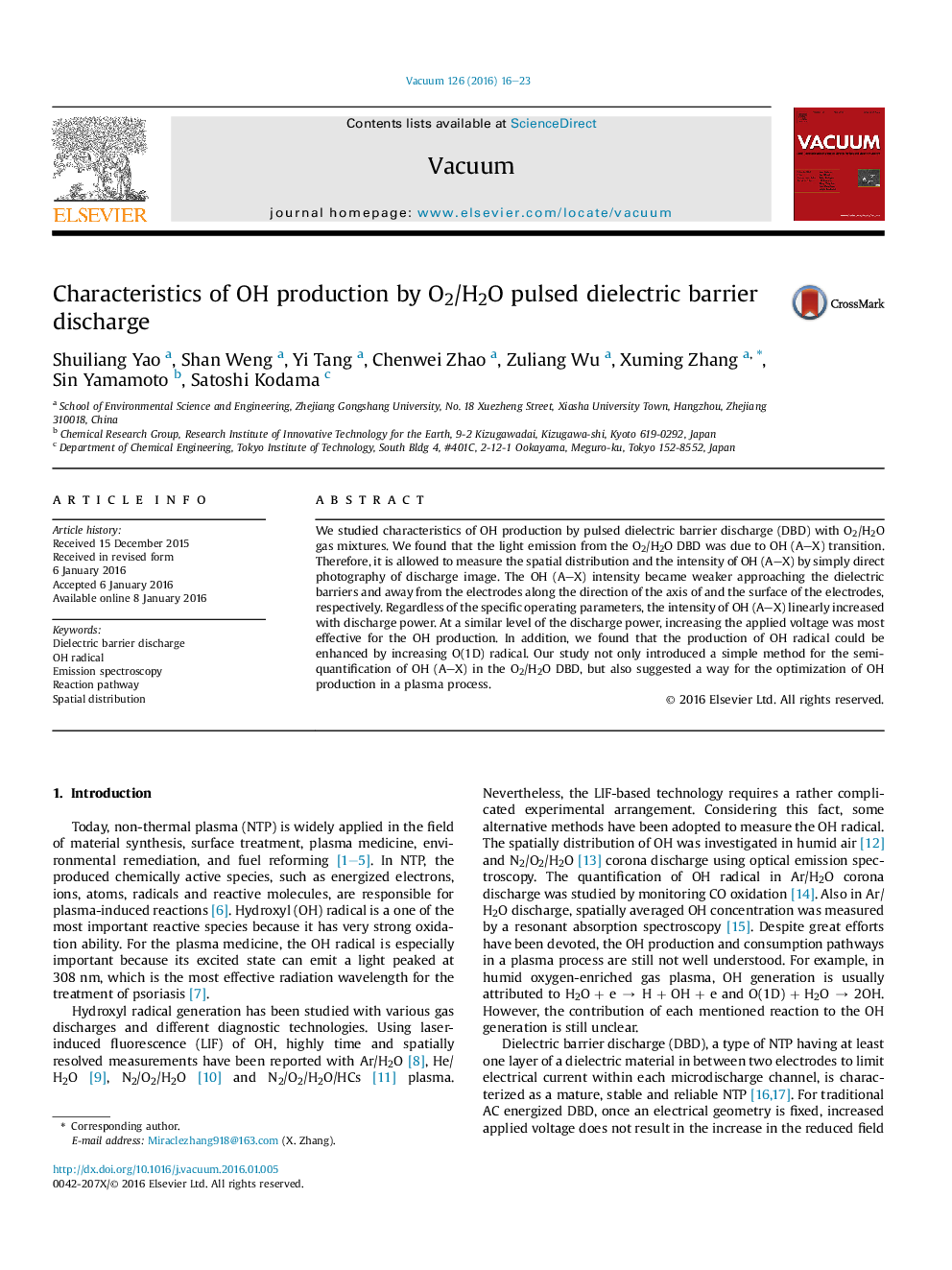| Article ID | Journal | Published Year | Pages | File Type |
|---|---|---|---|---|
| 1689214 | Vacuum | 2016 | 8 Pages |
•Experimental and numerical methods are used in this study.•Light emission from the O2/H2O DBD is due to OH (A–X) radiation.•Increasing applied voltage is most effective for OH generation.•OH radical can be enriched by increasing O(1D) or by decreasing O(3P).
We studied characteristics of OH production by pulsed dielectric barrier discharge (DBD) with O2/H2O gas mixtures. We found that the light emission from the O2/H2O DBD was due to OH (A–X) transition. Therefore, it is allowed to measure the spatial distribution and the intensity of OH (A–X) by simply direct photography of discharge image. The OH (A–X) intensity became weaker approaching the dielectric barriers and away from the electrodes along the direction of the axis of and the surface of the electrodes, respectively. Regardless of the specific operating parameters, the intensity of OH (A–X) linearly increased with discharge power. At a similar level of the discharge power, increasing the applied voltage was most effective for the OH production. In addition, we found that the production of OH radical could be enhanced by increasing O(1D) radical. Our study not only introduced a simple method for the semi-quantification of OH (A–X) in the O2/H2O DBD, but also suggested a way for the optimization of OH production in a plasma process.
Graphical abstractFigure optionsDownload full-size imageDownload high-quality image (251 K)Download as PowerPoint slide
